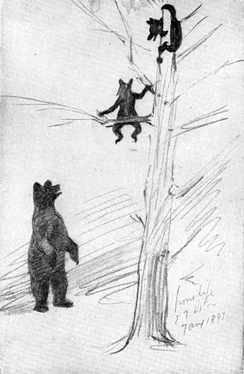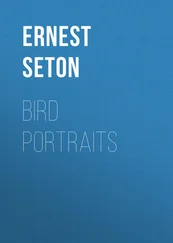Ernest Seton - Wild Animals at Home
Здесь есть возможность читать онлайн «Ernest Seton - Wild Animals at Home» весь текст электронной книги совершенно бесплатно (целиком полную версию без сокращений). В некоторых случаях можно слушать аудио, скачать через торрент в формате fb2 и присутствует краткое содержание. Год выпуска: 2009, Жанр: Природа и животные, на английском языке. Описание произведения, (предисловие) а так же отзывы посетителей доступны на портале библиотеки ЛибКат.
- Название:Wild Animals at Home
- Автор:
- Жанр:
- Год:2009
- ISBN:нет данных
- Рейтинг книги:5 / 5. Голосов: 1
-
Избранное:Добавить в избранное
- Отзывы:
-
Ваша оценка:
- 100
- 1
- 2
- 3
- 4
- 5
Wild Animals at Home: краткое содержание, описание и аннотация
Предлагаем к чтению аннотацию, описание, краткое содержание или предисловие (зависит от того, что написал сам автор книги «Wild Animals at Home»). Если вы не нашли необходимую информацию о книге — напишите в комментариях, мы постараемся отыскать её.
Wild Animals at Home — читать онлайн бесплатно полную книгу (весь текст) целиком
Ниже представлен текст книги, разбитый по страницам. Система сохранения места последней прочитанной страницы, позволяет с удобством читать онлайн бесплатно книгу «Wild Animals at Home», без необходимости каждый раз заново искать на чём Вы остановились. Поставьте закладку, и сможете в любой момент перейти на страницу, на которой закончили чтение.
Интервал:
Закладка:
Since the creature is chiefly nocturnal, the traveller is not likely to see it, excepting late at night when venturesome individuals often come creeping about the campfire, looking for scraps or crumbs; or sometimes other reckless youngsters of the race, going forth to seek their fortunes, are found drowned in the tanks or wells about the hotels.

XXXIV. The Coney or Calling Hare
Photo by W. E. Carlin
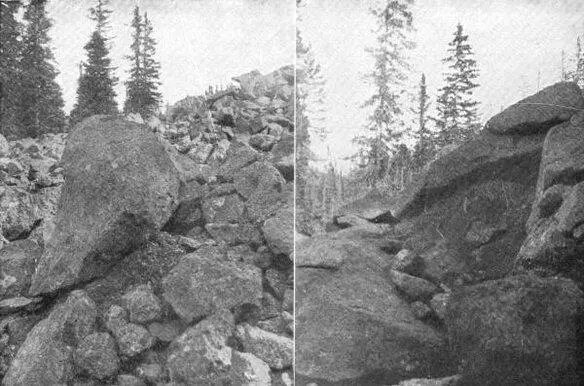
XXXV. The Coney barns full of hay stored for winter use
Photos by E. T. Seton
Here is a diagram of a Jumper in the act of living up to its reputation. And at once one asks what is the reason for this interminable tail. The answer is, it is the tail to the kite, the feathering to the arrow; and observation shows that a Jumping Mouse that has lost its tail is almost helpless to escape from danger. A good naturalist records that one individual that was de-tailed by a mowing machine, jumped frantically and far, but had no control of the direction, and just as often as not went straight up or landed wrong end to, and sometimes on a second bound was back where it had started from.
It is very safe to say that all unusual developments serve a very vital purpose in the life of the creature, but we are not always so fortunate as in this case, to know what that purpose is.
THE CALLING MOUSE
One day fifteen years ago I was sitting on a low bank near Baronett's Bridge across the Yellowstone, a mile and a half from Yancey's. The bank was in an open place, remote from cliffs or thick woods; it was high, dry, and dotted with holes of rather larger than field-mouse size, which were further peculiar in that most of them went straight down and none was connected with any visible overland runways.
All of which is secondary to the fact that I was led to the bank by a peculiar bleating noise like the "weak" of a Calling Hare, but higher pitched.
As I passed the place the squeakers were left behind me, and so at last I traced the noise to some creature underground. But what it was I could not see or determine. I knew only from the size of the hole it must be as small as a Mouse.
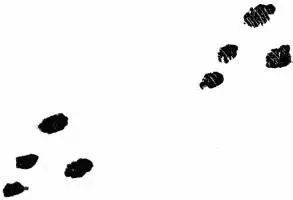
Not far away from this I drew some tracks I found in the dust, and later when I showed the drawing, and told the story to a naturalist friend, he said: "I had the same experience in that country once, and was puzzled until I found out by keeping a captive that the creature in the bank was a Grasshopper Mouse or a Calling Mouse, and those in your drawing are its tracks."
At one time it was considered an extremely rare animal, but now, having discovered its range, we know it to be quite abundant. In northern New Mexico I found one species so common in the corn-field that I could catch two or three every night with a few mousetraps. But it is scarce on the Yellowstone, and all my attempts to trap it were frustrated by the much more abundant Deer-mice, which sprang the bait and sacrificed themselves, every time I tried for the Squeaker.
In the fall of 1912 I was staying at Standing Rock Agency in North Dakota. On the broken ground, between the river and the high level prairie, I noted a ridge with holes exactly like those I had seen on the Yellowstone. A faint squeak underground gave additional and corroborative evidence. So I set a trap and next night had a specimen of the Squeaker as well as a couple of the omnipresent Deer-mice.
Doubtless the Calling Mouse has an interesting and peculiar life history, but little is known of it except that it dwells on the dry plains, is a caller by habit;—through not around the campfire—it feeds largely on grasshoppers, and is in mortal terror of ants.
XI
Sneak-cats ― Big and Small

You may ride five hundred miles among the mountains, in a country where these beasts of prey abound, and yet see never a hair of a living Wildcat. But how many do you suppose see you? Peeping from a thicket, near the trail, glimpsing you across some open valley in the mountains, or inspecting you from various points as you recline by the campfire, they size you up and decide they want no nearer dealings with you; you are bad medicine, a thing to be eluded. And oh! how clever they are at eluding us.
If you turn out the biggest Lynx on the smoothest prairie you ever saw, he will efface himself before you count twenty. The grass may be but three inches high and the Lynx twenty-three, but he will melt into it, and wholly escape the searching eyes of the keenest. One would not think an empty skin could lie more flat. Add to this the silent sinuosity of his glide; he seems to ooze around the bumps and stumps, and bottle up his frightful energy for the final fearsome leap. His whole makeup is sacrificed to efficiency in that leap; on that depends his life; his very existence turns on the wondrous perfection of the sneak, of which the leap is the culmination. Hunters in all parts where these creatures abound, agree in calling Wildcat, Lynx, and Cougar by the undignified but descriptive name of Sneak-cat.
THE BOBCAT OR MOUNTAIN WILDCAT
The Wildcat of Europe, and of literature, is a creature of almost unparalleled ferocity. Our own Wildcat is three times as big and heavy, so many persons assume that it is three times as ferocious, and therefore to be dreaded almost like a Tiger. The fact is, the American Wildcat or Bobcat is a very shy creature, ready to run from a very small dog, never facing a man and rarely killing anything bigger than a Rabbit.
I never saw but one Bobcat in the Yellowstone Park, and that was not in the Park, but at Gardiner where it was held a captive. But it came from the Park, and the guides tell me that the species is quite common in some localities.
It is readily recognized by its cat-like form and its short or bob-tail, whence its name.
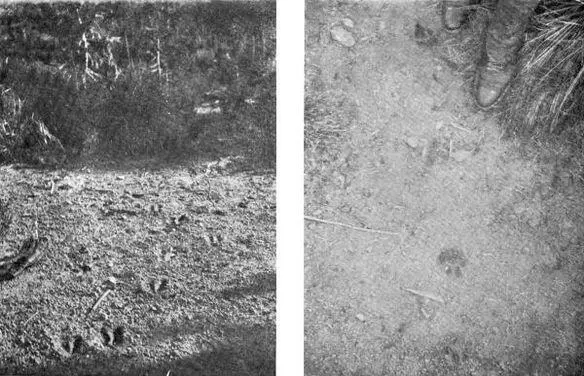
XXXVI. (a) Tracks of Deer escaping and (b) Tracks of Mountain Lion in pursuit
Photos by E. T. Seton

XXXVII. The Mountain Lion sneaking around us as we sleep
Sketch by E. T. Seton
MISUNDERSTOOD—THE CANADA LYNX
The southern part of North America is occupied by Bobcats of various kinds, the northern part by Lynxes, their very near kin, and there is a narrow belt of middle territory occupied by both. The Yellowstone Park happens to be in that belt, so we find here both the Mountain Bobcat and the Canada Lynx.
I remember well three scenes from my childhood days in Canada, in which this animal was the central figure. A timid neighbour of ours was surprised one day to see a large Lynx come out of the woods in broad daylight, and walk toward his house. He went inside, got his gun, opened the door a little, and knelt down. The Lynx walked around the house at about forty yards distance, the man covering it with the gun most of the time, but his hand was shaking, the gun was wabbling, and he was tormented with the thought, "What if I miss, then that brute will come right at me, and then, oh, dear! what?"
Читать дальшеИнтервал:
Закладка:
Похожие книги на «Wild Animals at Home»
Представляем Вашему вниманию похожие книги на «Wild Animals at Home» списком для выбора. Мы отобрали схожую по названию и смыслу литературу в надежде предоставить читателям больше вариантов отыскать новые, интересные, ещё непрочитанные произведения.
Обсуждение, отзывы о книге «Wild Animals at Home» и просто собственные мнения читателей. Оставьте ваши комментарии, напишите, что Вы думаете о произведении, его смысле или главных героях. Укажите что конкретно понравилось, а что нет, и почему Вы так считаете.
